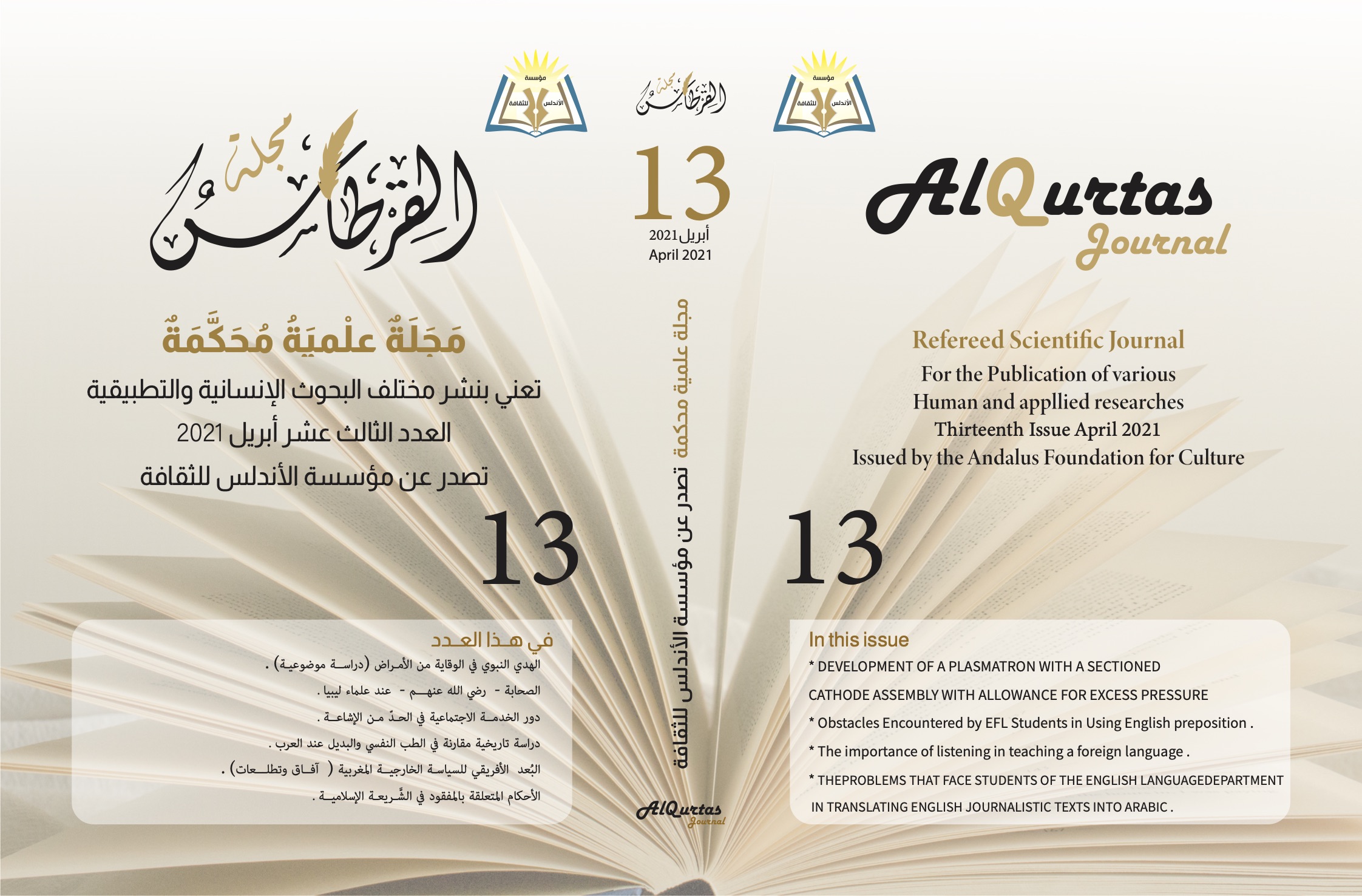Curriculum Intentions and Implementation of Teaching the Listening Skill in EFL Classrooms in Libyan Public Schools
Main Article Content
Abstract
The study aims to point out that there is a gap taking place between curriculum materials and implementation concerning teaching the listening skill in EFL classrooms in Libyan public schools in Tripoli. To provide evidence, the study embarked on measuring the extent of teaching the listening skill in these classrooms. The study also attempts to identify some difficulties that face classroom teachers in teaching listening. The general hypothesis is that there is serious lack of teaching and learning the listening skill. A quantitative methodology is adopted to test the hypothesis. Two data collection tools are used: a questionnaire that addressed the EFL teachers in Tripoli and classroom observation. The study reveals that the listening materials provided in the school course books are evidently ignored and skipped. Some of the reasons behind this neglect is the omission of testing the skill of listening from the EFL program in public schools. As a consequence, a wilful neglect of teaching this skill is found in these schools. Research points out that listening occupies the largest section of language daily use. Celca- Murcia (1995) lists percentages of the use of each language skill. The listening skill takes up to 45% of daily life communication whereas speaking takes up to 30%, reading 16% and writing only 9%. According to King (2006: 210) listening is the first mile stone in first language acquisition through which the way is paved to the other language skills. Language perception precedes language production. Therefore, listening is considered the base that underlies all language skills. On similar grounds, listening ought to be basic in foreign language learning. Teaching English as a foreign language (EFL) programs provide rich varieties of listening materials. The EFL program implemented in Libyan public schools (Garnet 21st Century English for Libya) exhibits plentiful listening materials distributed throughout the units of both the course book and the workbook. Yet, the implementation of this curriculum material has been selective and biased towards particular sections, omitting important sections of the program, of which listening has been one.

